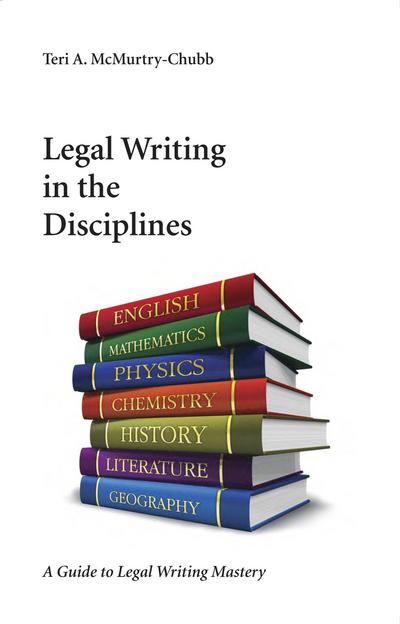Legal Writing in the Disciplines
A Guide to Legal Writing Mastery
2012
Tags: First Year; Introduction to Law; Legal Writing; Practitioner Resources; and Pre-Law
Teacher's Manual available
174 pp $25.00
ISBN 978-1-59460-959-6
eISBN 978-1-5310-0244-2
McMurtry-Chubb received the 2021 Thomas F. Blackwell Memorial Award for Outstanding Achievement in the Field of Legal Writing. The award is is presented annually to a person who has made an outstanding contribution to improve the field of Legal Writing.
One of the most common questions that prospective law students ask is "What is the best major to prepare me to study law?" The most common answer given by college advisors is "Any major." The perception of law school as a "free for all" accessible to students of any major sets students up for the confusion they experience in learning the law and legal skills. When students begin their legal education, they are taken out of their undergraduate and graduate disciplines and placed into the legal discipline without context for how their disciplinary education relates to their legal education. This leads to many of the frustrations that new law students have with law school, especially in their legal writing classes.
Legal Writing in the Disciplines re-conceptualizes law in its disciplinary context. The text is designed to effectively communicate legal analysis and writing skills to pre-law and new law students using the language of their undergraduate and graduate majors. Legal writing is disciplinary writing, not just another form of technical writing. Law school is a disciplinary community. Integration into any disciplinary community occurs through the processes of reading and writing.
The first chapter of the text details all aspects of the processes used to create practical legal writing (case briefs, notes, outlines and MindMaps, legal memos, legal briefs, exam outlines and exam answers). The five remaining chapters are divided into five broad disciplinary categories: Science, Social Science, Arts, Humanities and Business. Each chapter contains discipline-specific instruction on creating the different types of legal writing. The chapter sections lead the reader through the resolution of a legal problem through legal writing and provide answers for self-check with discipline-specific explanations on an interactive CD-ROM. The CD-ROM allows students to load PDFs (the materials, exercises, model answers, and case files to which the text refers) onto an iPad or other tablet for flexibility and ease of use in practicing legal writing skills. Additionally, the materials, exercises, and model answers are annotated in color with discipline-specific explanations to guide students as they assimilate new legal writing skills.
A teacher's manual accompanies the text and features semester and quarter course planning options, learning outcomes and performance criteria for each week, lecture notes for each week, in-class exercises and supporting materials, and assessment rubrics for all assignments and skills. The rubrics are keyed to the weekly learning outcomes and performance criteria. An interactive CD-ROM with case files for a legal memo, legal brief, and other instructional materials is included.
Comp Copy If you are a professor teaching in this field you may request a complimentary copy.


